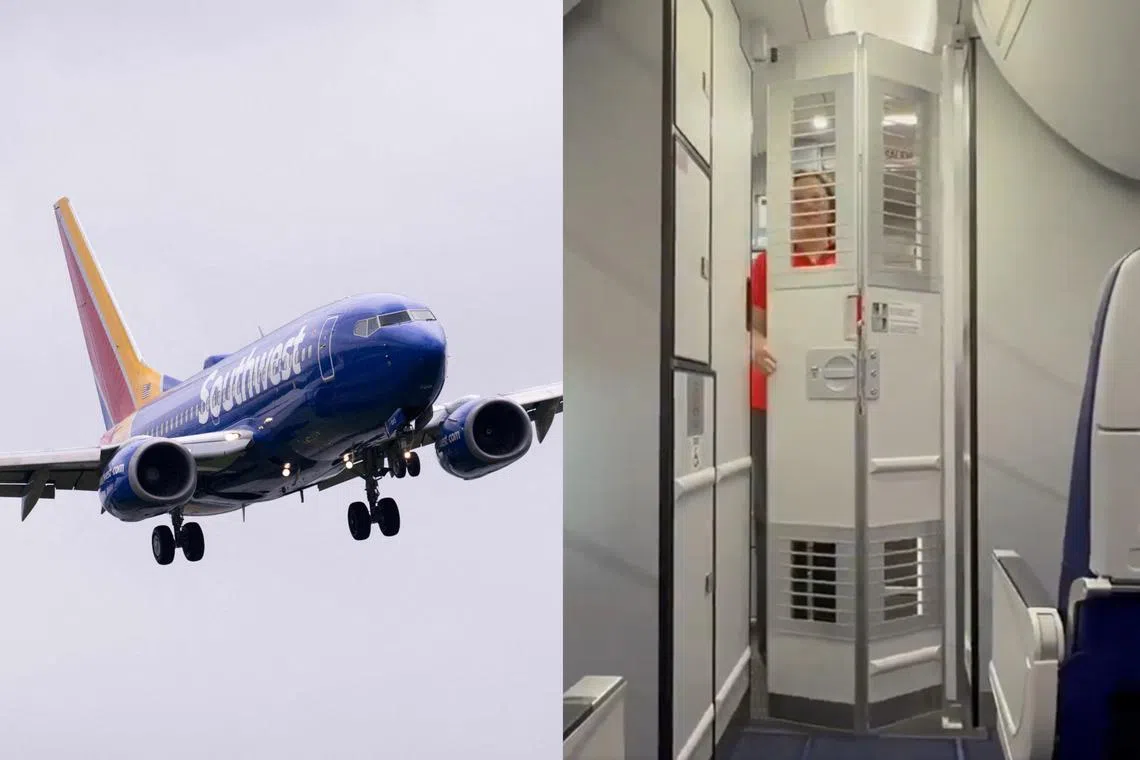US airline flies first plane with secondary cockpit barrier
Sign up now: Get ST's newsletters delivered to your inbox

Southwest Airlines in the US flew a Boeing 737 Max with the new secondary cockpit doors from Phoenix to Denver.
PHOTO, SCREENSHOT: AFP, X
Follow topic:
- Southwest Airlines has begun using its first Boeing 737 Max 8 with secondary cockpit barriers to improve flight deck security.
- The FAA rule, effective August 25, 2023, mandates secondary barriers on new US commercial aeroplanes.
- While most airlines will delay implementation, Southwest will immediately use the barriers on new deliveries, with 25 more planned this year.
AI generated
NEW YORK - Southwest Airlines on Aug 30 began flying its first jet with a secondary barrier to the flight deck designed to prevent intrusions.
The plane – a Boeing 737 Max 8 which was delivered in recent days – took off on the afternoon of Aug 29 from Phoenix to Denver, the airline said.
Secondary barriers – long sought after the Sept 11, 2001 attacks that exposed the risks of inadequate flight deck protection – are crucial to aviation safety, pilots unions have argued.
The flight is a milestone that marks the beginning of the roll out of the safety feature across the new US commercial airline fleet in the coming years.
Boeing and Airbus told Reuters they have begun delivering aeroplanes with the barriers under the Federal Aviation Administration regulation announced in 2023 that took effect on Aug 25.
In July, the FAA agreed to give airlines until late July 2026 to put the barriers in newly delivered planes into use. Most major carriers have told the FAA they plan to take advantage of the extension and not immediately begin using the barriers.
Southwest has opted to immediately begin complying as they take delivery of new aeroplanes and expects to take delivery of about 25 additional Boeing aeroplanes this year that will have the barriers.
“We felt like we could get it done and put it in production as soon as the aircraft was ready,” said Mr Justin Jones, Southwest’s executive vice-president for operations
After the hijacking of four US aeroplanes on Sept 11, 2001, the FAA adopted standards for flight deck security to make them resistant to forcible intrusion and unauthorised entry.
The FAA rule requires aircraft manufacturers to install a second physical barrier on new planes used in commercial passenger service in the US, but does not require existing planes to be retrofitted. Plane makers without FAA certification of barriers do not yet need to be in compliance. REUTERS

